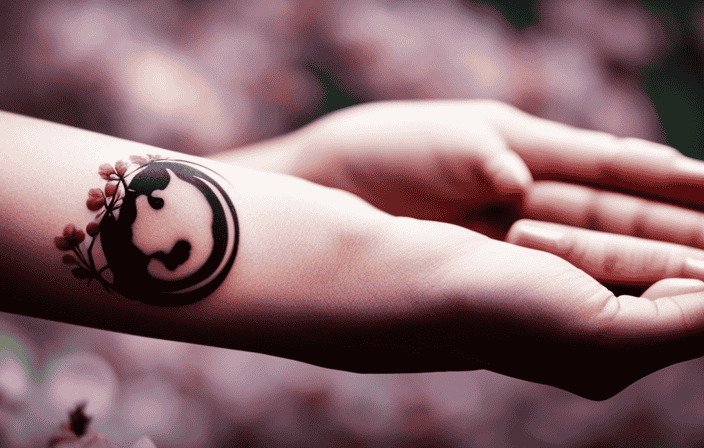Have you ever considered the effect that skipping sleep meditations can have on your college performance?
Sleep meditations, designed to promote relaxation and reduce stress, play a crucial role in maintaining healthy sleep patterns. Without them, individuals may experience difficulties concentrating and suffer from impaired memory function, potentially leading to lower academic performance.
Additionally, the absence of sleep meditations can contribute to constant stress, irritability, and emotional triggers, further hindering one’s ability to excel academically.
In this article, we will explore the impact of skipping sleep meditations on college grades, highlighting the importance of incorporating these practices into our daily routines for improved cognitive abilities and academic success.
Key Takeaways
- Skipping sleep meditations can disturb sleep patterns and lead to a lack of opportunity to recover from a hard day, resulting in minimal concentration for the next day and an increased risk of experiencing drowsiness.
- Without sleep meditations, individuals may have difficulty remembering information, including professor’s lectures, leading to lower grades due to impaired memory function.
- Constant stress and irritability can result from a lack of sleep, leading to extreme tiredness, inability to focus, increased irritability, and emotional triggers, which can negatively impact academic performance.
- Incorporating sleep meditations into one’s routine can contribute to better academic performance by improving concentration and focus, enhancing memory function, reducing stress levels, and promoting better cognitive abilities.
Definition and Purpose
Sleep meditations are defined as practices designed to help individuals relax, eliminate stress, and quiet obsessive thoughts, allowing them to enter a trance-like state and disconnect from the outside world.
These meditations are specifically created for individuals with insomnia and nervous system disorders, aiming to improve their psycho-emotional state after a few weeks of regular practice.
The benefits of sleep meditations include relaxation and stress relief, as well as the ability to train the body and mind to switch between the physical and spiritual world.
By incorporating sleep meditations into one’s routine, individuals can experience improved overall mental well-being and a greater sense of calm and tranquility.
These practices have been shown to promote better sleep patterns, increased concentration, and enhanced emotional well-being, all of which can have a positive impact on academic performance.
Effects on Sleep Pattern
Neglecting the practice of sleep meditations has been found to disrupt the regular sleep patterns of individuals, with studies reporting an average decrease in total sleep time by 1 hour and 15 minutes per night. This disturbance in sleep can have significant consequences on an individual’s overall well-being and academic performance.
The effects of skipping sleep meditations on sleep patterns can lead to disturbed sleep, characterized by difficulties falling asleep and staying asleep throughout the night. This can result in feeling tired and groggy the next day, making it challenging to concentrate and focus during lectures or study sessions.
Additionally, decreased focus and concentration are common consequences of skipping sleep meditations. Without the relaxation and stress-relieving benefits of these practices, individuals may experience difficulty in maintaining attention and retaining information. This can ultimately impact their ability to perform well on exams and assignments, leading to lower grades.
Engaging in regular sleep meditations can help regulate sleep patterns and improve focus, contributing to better academic performance. It is important for college students to recognize the significance of incorporating these practices into their evening routine to promote healthy sleep habits and enhance their cognitive abilities.
Effects on Concentration
Engaging in regular sleep meditations has been shown to enhance cognitive abilities and improve focus and concentration among college students. However, skipping sleep meditations can have detrimental effects on concentration.
Impaired focus is one of the main consequences of neglecting sleep meditations. Without the relaxation and stress-relief provided by these practices, students may find it difficult to concentrate on their tasks and experience decreased productivity. The lack of mental clarity and calmness can hinder their ability to stay focused for extended periods of time, leading to suboptimal performance.
Additionally, the absence of sleep meditations can disrupt the body’s natural rhythm, making it harder for students to maintain sustained attention and engage in tasks that require high levels of concentration.
Therefore, incorporating sleep meditations into one’s routine is crucial for maintaining optimal focus and productivity in college.
Effects on Short-Term Memory
The absence of these mindfulness practices can have adverse effects on the ability to retain and recall information in the short-term, potentially hindering academic performance. Sleep meditations play a crucial role in memory consolidation and without them, the retention of information becomes impaired.
The practice of sleep meditations allows the brain to process and store newly acquired knowledge effectively. Cognitive decline can be observed in individuals who do not engage in sleep meditations, as they struggle to remember information, including lectures from professors. This impaired retention ultimately leads to lower grades and a decreased ability to handle the required amount of data.
Sleep meditations act as a last chance to induce sleep and enhance neural connections, enabling optimal brain function. Therefore, the incorporation of sleep meditations into one’s routine is essential for maintaining short-term memory and achieving academic success.
Effects on Long-Term Memory
The absence of regular sleep meditations can have a profound and lasting impact on an individual’s ability to retain and consolidate information in their long-term memory, potentially hindering their academic success.
Sleep meditations play a crucial role in cognitive function, as they assist in the consolidation of information into long-term memory. Without the aid of sleep meditations, individuals may experience impaired information retention, making it difficult to recall important concepts and lectures.
The practice of sleep meditations facilitates the transfer of information from short-term to long-term memory, allowing for better recall and understanding of academic material.
Therefore, neglecting sleep meditations can result in a decreased ability to retain and retrieve information, ultimately affecting academic performance and hindering the achievement of academic success.
Constant Stress and Irritability
The previous subtopic discussed the effects of skipping sleep meditations on long-term memory.
Now, let us delve into another significant consequence of neglecting sleep meditations: constant stress and irritability. Lack of sleep meditations can lead to extreme tiredness and an inability to focus, which can have negative consequences on one’s emotional well-being.
This can manifest as an increased irritability and a higher likelihood of experiencing emotional triggers. The constant stress resulting from the lack of sleep meditations can further exacerbate these negative emotions, potentially leading to rude behavior towards friends or professors.
It is crucial to recognize the importance of sleep meditations for emotional well-being, as they can help reduce stress levels and improve cognitive abilities. Incorporating sleep meditations into one’s routine can provide a tool for achieving academic success and maintaining a positive emotional state.
Importance for Academic Success
Incorporating sleep meditations into one’s daily routine has been shown to significantly enhance academic performance, as it fosters improved concentration, heightened focus, and enhanced memory function, ultimately leading to a higher likelihood of achieving academic success. By engaging in sleep meditations, individuals can improve their ability to focus on tasks, reducing distractions and increasing productivity. Additionally, sleep meditations have been found to reduce anxiety levels, allowing students to approach their academic responsibilities with a calmer and clearer mindset. This can lead to better decision-making and problem-solving skills, which are crucial for academic success. Research has also shown that sleep meditations can enhance memory function, aiding in the retention and recall of information learned in lectures and study sessions. Overall, incorporating sleep meditations into one’s routine can have a profound positive impact on academic performance.
| Benefits of Incorporating Sleep Meditations into Daily Routine |
|---|
| Improved concentration |
| Heightened focus |
| Enhanced memory function |
| Reduced anxiety levels |
Benefits of Sleep Meditations
By regularly practicing sleep meditations, individuals can experience a range of benefits that contribute to their overall well-being and academic success.
Sleep meditations have been shown to improve cognitive abilities and enhance emotional well-being. Through the practice of sleep meditations, individuals can enhance their concentration and focus, leading to improved academic performance. Additionally, sleep meditations have been found to enhance memory function, allowing individuals to better retain and recall information.
By reducing stress levels, sleep meditations also contribute to better cognitive abilities, as stress can impair cognitive function. Overall, incorporating sleep meditations into one’s routine can have a positive impact on both mental and academic performance.
It is recommended to allocate 10-20 minutes before bed for sleep meditations to reap these benefits.
Frequently Asked Questions
How long does it typically take for sleep meditations to start improving one’s psycho-emotional state?
The effectiveness of sleep meditations in improving one’s psycho-emotional state can vary. However, with regular practice, individuals may start experiencing benefits in their psycho-emotional state after a few weeks of consistent engagement in sleep meditations.
Can lack of sleep meditations lead to long-term sleep disturbances?
The lack of sleep meditations can have long-term effects on sleep quality. Research suggests that individuals who do not engage in sleep meditations may experience disturbances in their sleep patterns, leading to difficulties in falling asleep and maintaining a restful sleep state.
Are there any alternative methods or practices that can be used to relax and reduce stress if sleep meditations are not utilized?
Alternative relaxation methods and stress reduction techniques can be used if sleep meditations are not utilized. These may include deep breathing exercises, progressive muscle relaxation, mindfulness meditation, yoga, and aromatherapy, which have been shown to promote relaxation and reduce stress.
What are the potential consequences of impaired memory function on college grades?
What are the potential consequences of impaired memory function on college grades? Impaired memory function can lead to difficulty in remembering information, including lectures, resulting in lower grades. It is crucial to address sleep meditations for memory consolidation and academic success.
Is there a recommended frequency or duration for practicing sleep meditations in order to achieve optimal academic performance?
There is no specific recommended frequency or duration for practicing sleep meditations to achieve optimal academic performance. However, regular practice of 10-20 minutes before bed can contribute to improved concentration, memory function, and reduced stress levels, all of which can enhance academic success.










